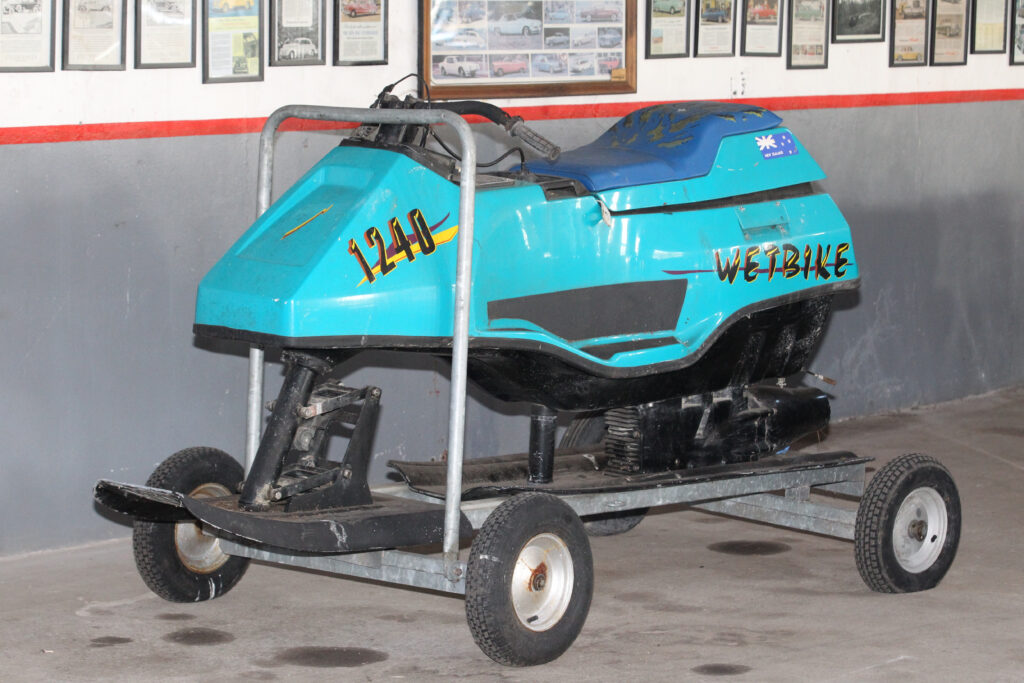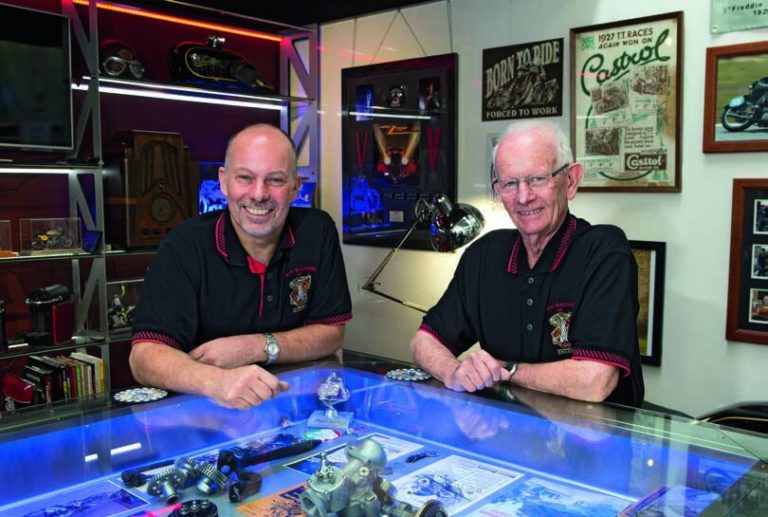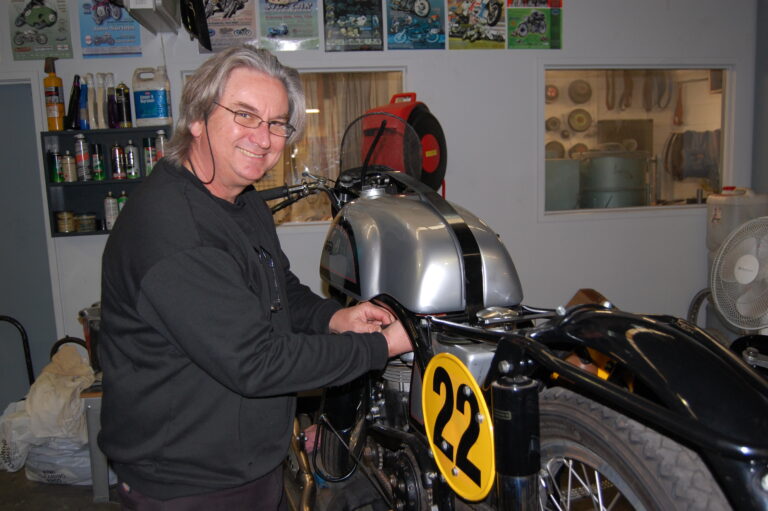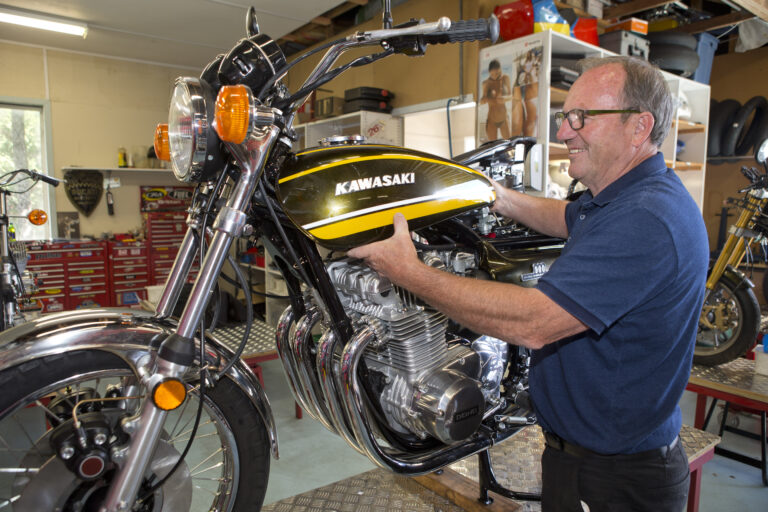There’s plenty of room in Phil’s shed
By Ray Cleaver
Photographs: Rob Tucker
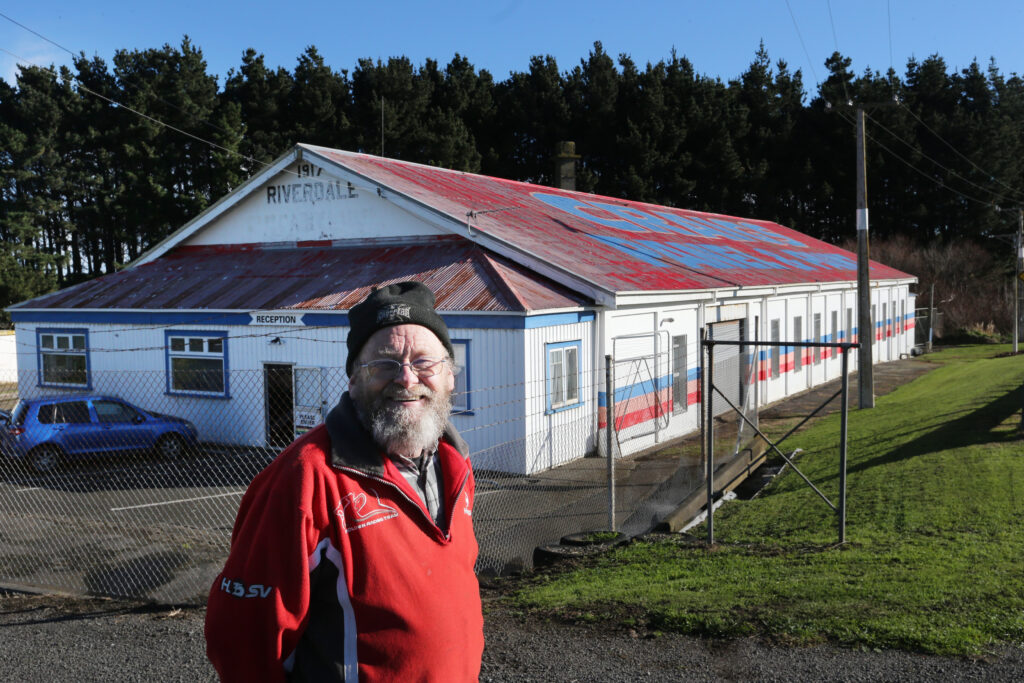
When Phil Kindberg decided to escape the Auckland rat race and retire to rural Taranaki with his precious collection of old Studebaker cars, he didn’t dream of the massive shed that was waiting for him.
Two years ago he made the shift south and purchased the 100-year-old Riverdale dairy factory, not far west of Hawera.
The big factory, which in its heyday specialised in cheese production, already had a bit of a past with motor vehicles, having been a panel beating shop for a while and also once housing a huge collection of old Citroen cars.
Now on display in the factory are Phil’s seven Studebakers from 1947 to 1962, a 1958 Packard, a mate’s collection of 40 motorbikes, including some classics and home-made bikes, and other weird and wonderful machines.
The 600-square-metre factory building had a staff of 18 in its days of cheese-making. Now Phil has made his living quarters in the office space. The old factory building is bigger than his Auckland house and section combined.
“It sometimes takes people an hour and a half to get to work in Auckland. It was a nightmare and I’d had a gutsful. This is a dream shed for me and country people are a lot friendlier than the big smoke. I love it.”
His daughter Huihana persuaded him to make the jump and his brother, Dave, already living in South Taranaki, put in an offer of $150,000 on the factory. Phil ended up with an acre and a quarter (0.5 ha) of land with the big factory and four outbuildings on it.
He moved south with five Studebakers, his Harley bike and a Mazda.
“This is a dream shed for me and country people are a lot friendlier than the big smoke. I love it”
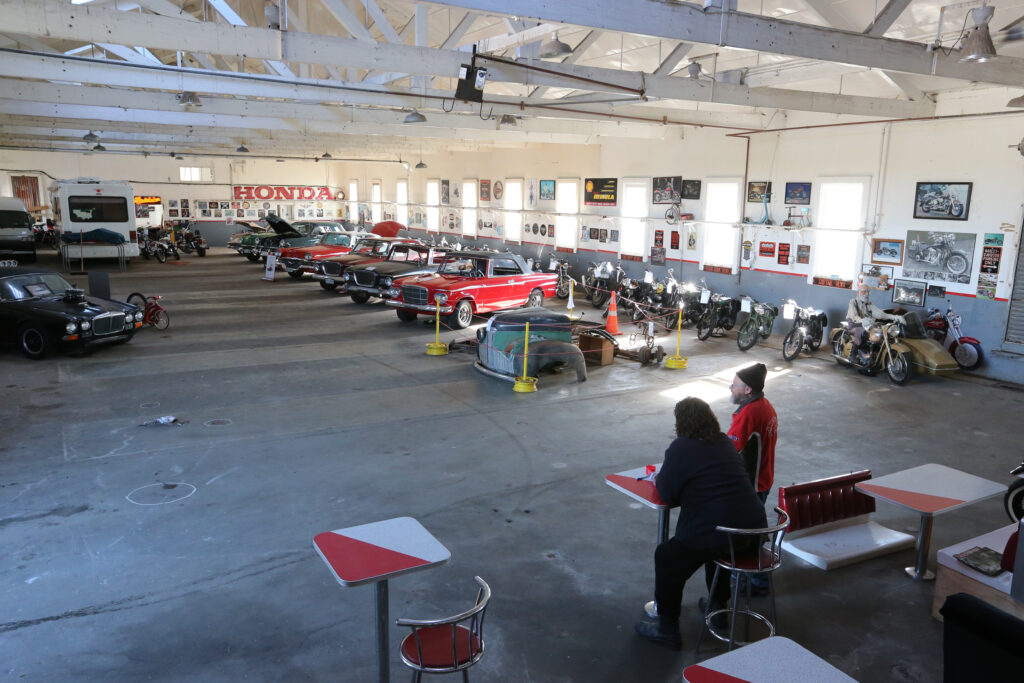
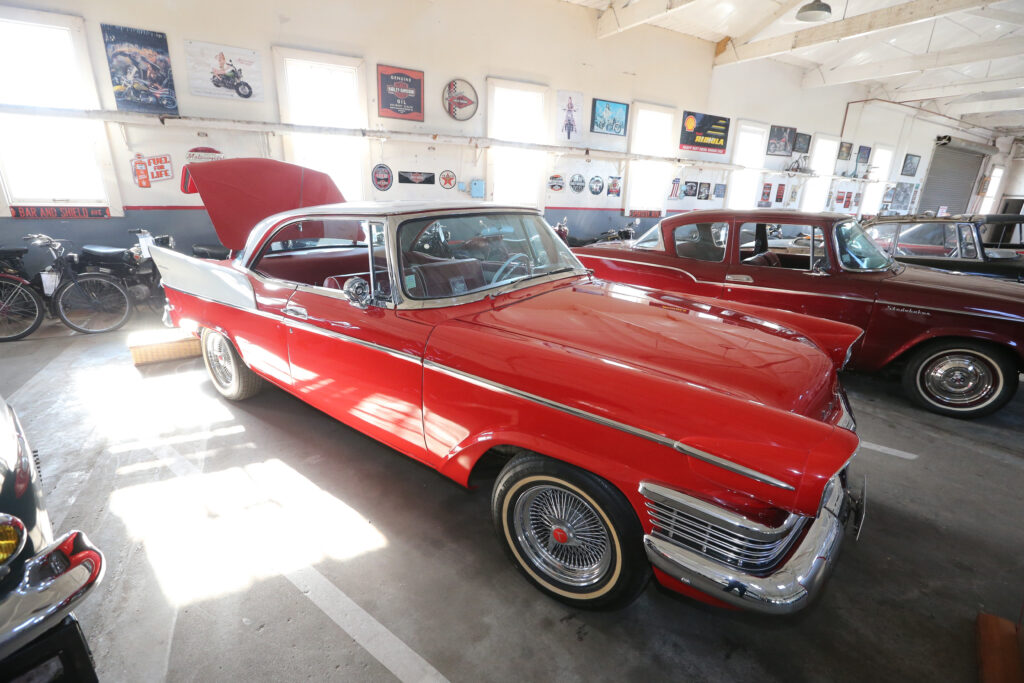
Studebaker fan
Phil’s love of old Studebakers goes back to his childhood when his father drove the family around in a 1947 four-door Studebaker Champion. He has that model in his collection.
His first car was a 1956 Studebaker he purchased from his father in the early 1970s. The next one was a 1963 Studebaker Lark Cruiser, which he drove for nine years before selling it to finance a big celebration for his wife’s 21st.
He’s owned about 40 Studebakers over the years but has cut this down to seven, plus an old Packard. Packard merged with Studebaker in 1954. Studebakers and Packards are a bit special. The merged company ceased production in 1966.
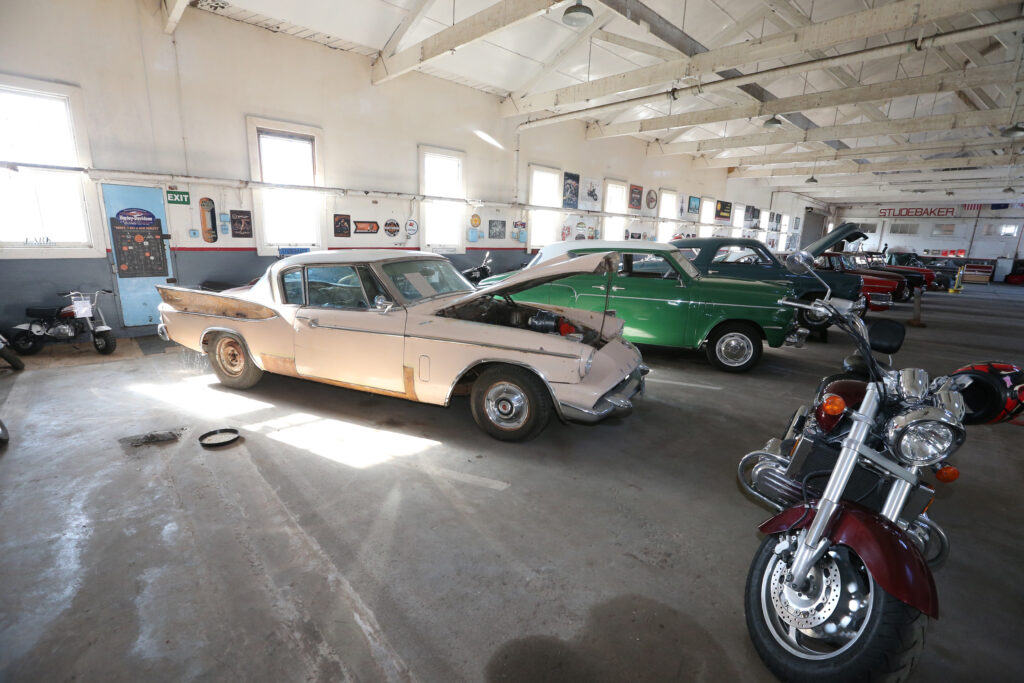
The history of Studebaker
Studebaker (1852–1967) was an American wagon and automobile manufacturer based in South Bend, Indiana. According to its on-line history, it was founded in 1852 and incorporated in 1868]under the name of the Studebaker Brothers Manufacturing Company. The company was originally a producer of wagons for farmers, miners, and the military.
Studebaker entered the automotive business in 1902 with electric vehicles and in 1904 with gasoline vehicles, all sold under the name “Studebaker Automobile Company”. Over the next 50 years, the company established a reputation for quality and reliability.
After years of financial problems, in 1954 the company merged with luxury carmaker Packard to form the Studebaker-Packard Corporation. However, Studebaker’s financial problems were worse than the Packard executives thought. The Packard marque was phased out, and the company returned to the Studebaker Corporation name in 1962. The US plant ceased production in 1963, and the last Studebaker automobile rolled off the Hamilton assembly line in Ontario, Canada, on March 16, 1966.
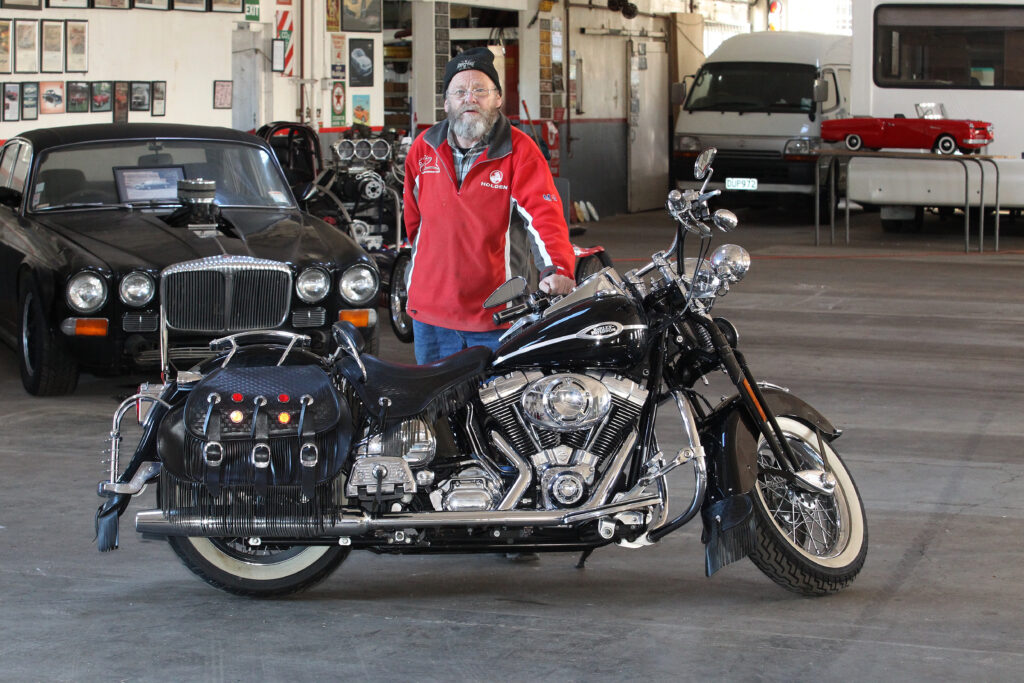
Phil’s garage
He calls the factory Phil’s Garage and different clubs and groups, often car clubs, come and visit the collection of cars and bikes. Phil has a workshop area and a parts room.
The old factory office and smoko rooms are his living quarters and on the factory floor is a 1950s/60s themed area for visitors to relax, complete with jukebox and second-hand Burger King seats and tables. This area he calls Phil’s Diner.
Phil spent 28 years in the luggage-making trade, fashioning bags, backpacks and briefcases. For the past 16 years he worked making spa and pool covers. Now, aged 61, he has plenty of time to work on his car collection. He does some mechanical work on the cars and, of course, all the upholstery and interior work.
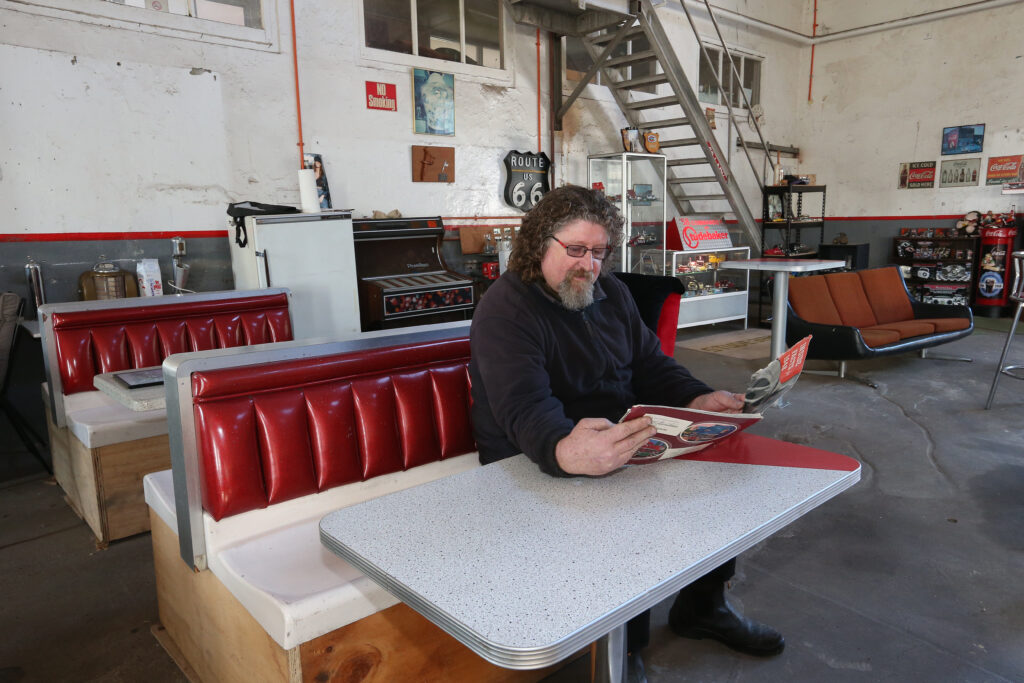
“The old factory building is bigger than his Auckland house and section combined”
Beer crate banjo
Hanging on the wall at Phil’s Garage is a rather unique instrument, a slide guitar made from a Studebaker hubcap attached to part of an ABC beer crate. There’s a Heineken bottle for a bridge and the string nuts are Heineken bottle caps. It even has an electric pickup. The guitar has travelled to the US and been played in public performances.
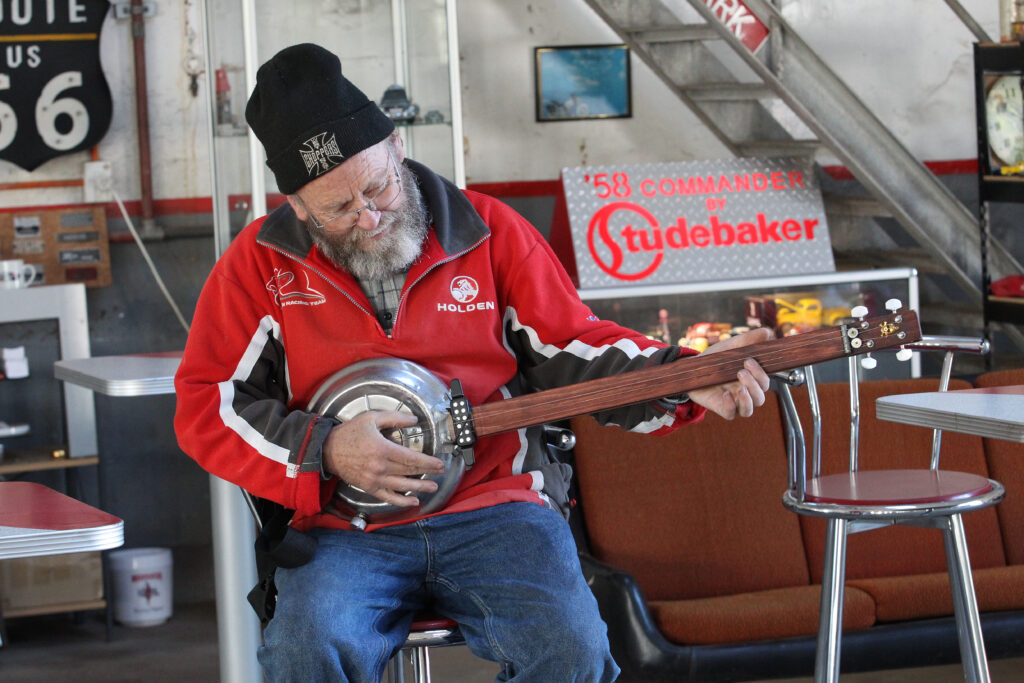
The bike collection
With so much room in the building he has space to share. He met a friend of his brother’s, Bob Seaver, who has a large collection of motorbikes and is building a motorcycle museum in Hawera. Bob is a motorcycle mechanic who started life as a sheet metal worker and the factory is the perfect place to display some of his collection.
He moved 40 of his bikes into the factory and these include some rare and very interesting machines, from 1942 WWII bikes to 2007 models.
Familiar classic models on show include AJS, Norton, Ducati, BSA, Ariel, and Jawa.
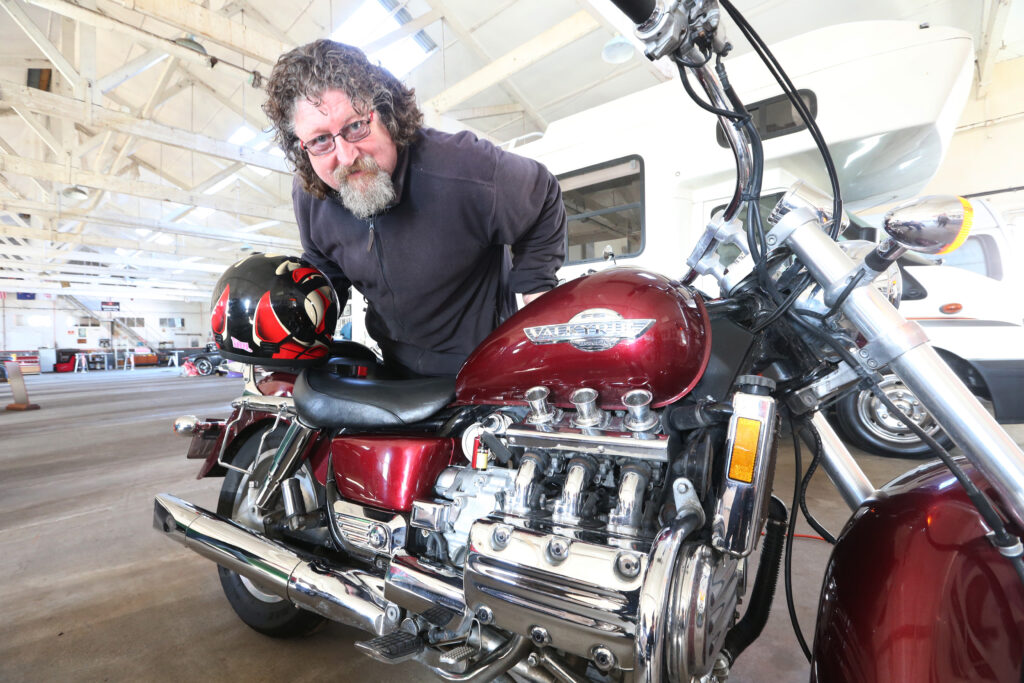
Next project
The next restoration job. One of the more unique and rare cars in Phil’s collection is this 1958 Packard Hawk V8, one of only two in New Zealand. As well as classic sweeping lines, the car is powered by a supercharged 289-cubic-inch engine that puts out 275 hp. The car has power steering and auto transmission. Phil picked up the car in this original condition and it was complete except for the supercharger. A recent visitor to Phil’s Garage looked at the car and said, “I’ve got one of those you can have.” To Phil’s delight it fitted perfectly.
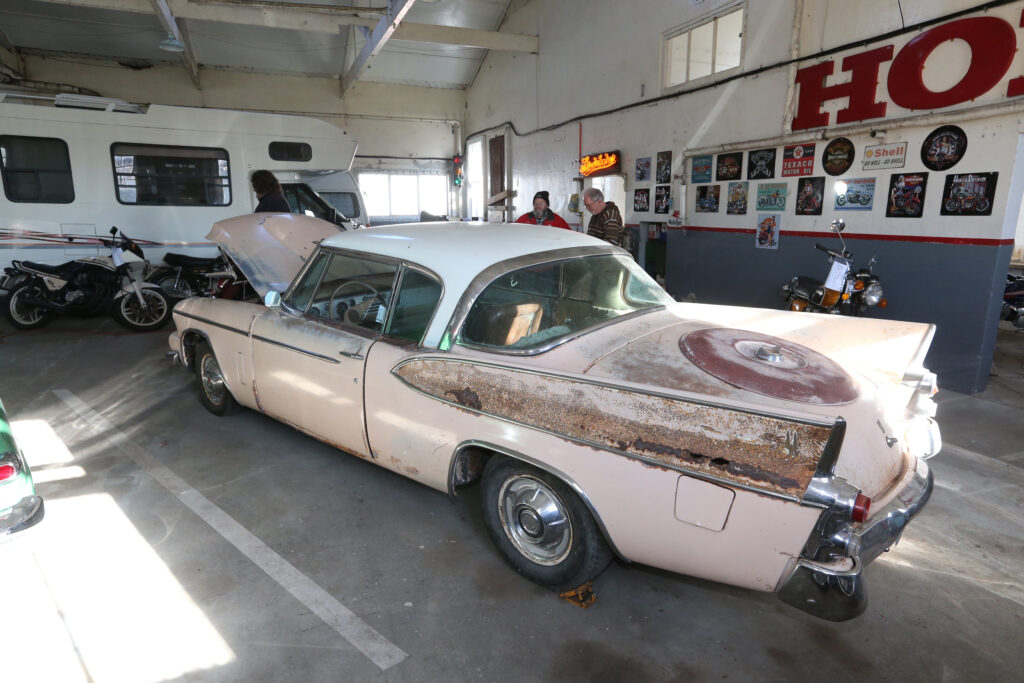
Early jet ski
Bob Seaver’s early jet ski. This 1980 model from Suzuki was one of the first jet skis produced. Called the Wet Bike, it has a 1240cc engine and has a front ski it rides on when the jet ski gets up on the plane. The machine was given to Bob for display in the motorbike museum he is building.
